Second practical session for "Introduction to image processing"
Bruno Galerne, Monday June 28, 2021
Link to the .m file:
https://www.idpoisson.fr/galerne/ed_images/tp3_intro_traitement_images.m
Download this file in a folder dedicated to the course and open matlab from there.
Contents
Download the images:
https://www.idpoisson.fr/galerne/ed_images/image_sharpening.png
https://www.idpoisson.fr/galerne/ed_images/parrot.bmp
https://www.idpoisson.fr/galerne/ed_images/jump.jpg
Discrete Fourier transform:
Recall from TP2:
u = rgb2gray(double(imread('parrot.bmp'))/255); mdftu = abs(fftshift(fft2(u))); logmdftu = log(1+mdftu); figure; subplot(1,3,1); imshow(u); title('image'); subplot(1,3,2); imshow(logmdftu,[]); title('Fourier modulus'); subplot(1,3,3); imhist(logmdftu/max(logmdftu(:)),256); drawnow
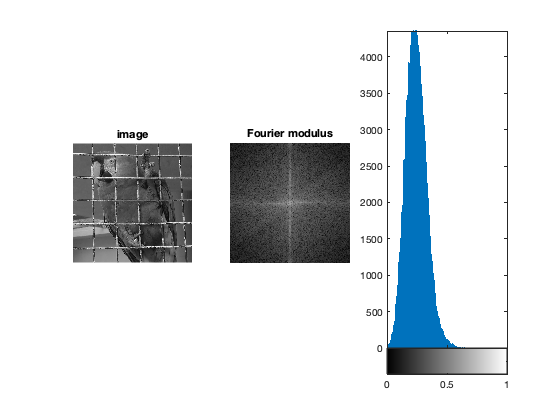
Low pass filter
Reproduce the low-pass filter demo in Matlab using the Parrot image (in grayscale) The code to produce a disk image is given below.
Discuss the different details that appear as the radius grows.
u = rgb2gray(double(imread('parrot.bmp'))/255); % crop if odd size: if mod(size(u,2),2) == 1 u = u(1:end-1,:); end if mod(size(u,2),2) == 1 u = u(:,1:end-1); end [M,N] = size(u); radius = 100; [Y,X] = meshgrid((-N/2):(N/2-1),(-M/2):(M/2-1)); D = X.^2+Y.^2; % distance to center at (M/2+1, N/2+1) mask = (D <= radius^2); figure subplot(2,2,1) imshow(X,[]) title('1st Fourier index'); subplot(2,2,2) imshow(Y,[]) title('2nd Fourier index'); subplot(2,2,3) imshow(D,[]) title('Distance to center'); subplot(2,2,4) imshow(mask,[]); title('Mask'); todo_low_pass_filter % todo test image rectangulaire.
0
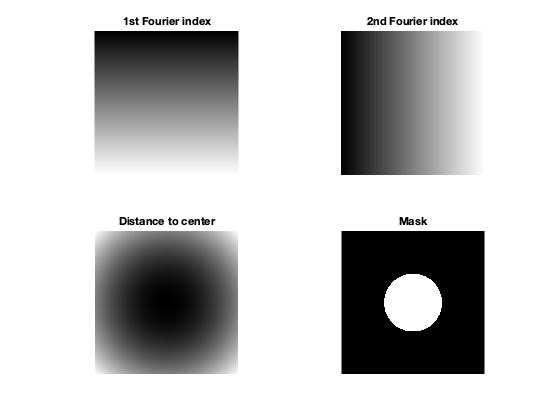
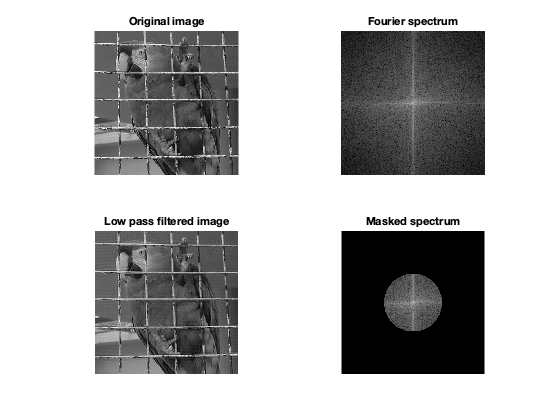
Image sharpening
Reproduce the experiment for image sharpening on the image 'image_sharpening.png'.
To do the smooth mask, apply a Gaussian convolution filter to the binary disk used above.
u = double(imread('image_sharpening.png'))/255; figure; imshow(u); %TODO
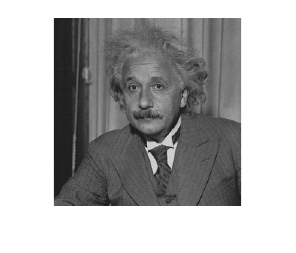
Image segmentation using histogram thresholding
Find the best chanel and best threshold for this channel to segment the man in the picture.
u = double(imread('jump.jpg'))/255; r = u(:,:,1); % always use semi-column otherwise display of all coefficient in the command window... g = u(:,:,2); b = u(:,:,3); tr = 30/255; tg = 30/255; tb = 30/255; figure; subplot(3,3,1); imshow(u); subplot(3,3,4); imshow(r); title('red chanel'); subplot(3,3,5); imshow(g); title('green chanel'); subplot(3,3,6); imshow(b); title('blue chanel'); subplot(3,3,7); imshow(u(:,:,1)>tr); title('Threshold red'); subplot(3,3,8); imshow(u(:,:,2)>tg); title('Threshold green'); subplot(3,3,9); imshow(u(:,:,3)<tb); title('Threshold blue');
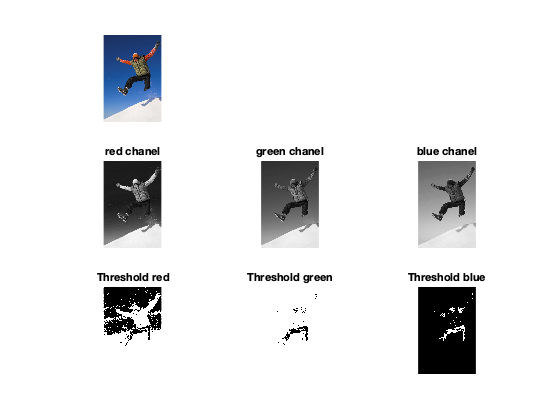
imageSegmenter:
Try the imagesegmenter with the jump image and an image of your own. Send me the mask by email.
Use the "export" button.
Then use imwrite(uint8(255*maskedImage), 'segmented_result.png');
Command to execute: imageSegmenter(u); % save result after Export: % imwrite(uint8(255*maskedImage), 'segmented_result.png');
% my result: figure; imshow(imread('jump.jpg')); figure; imshow(imread('segmented_result.png'))
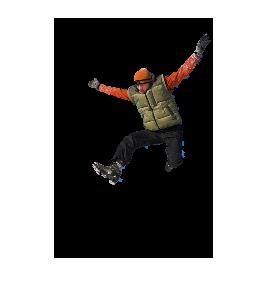
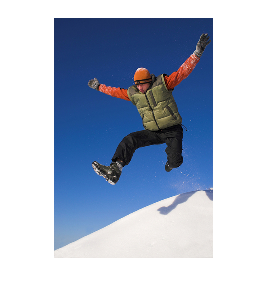
Credits:
Some parts of this practical session are inspired by: C. Deledalle course:
https://www.charles-deledalle.fr/pages/teaching.php
jump image from:
https://matlabtricks.com/post-35/a-simple-image-segmentation-example-in-matlab